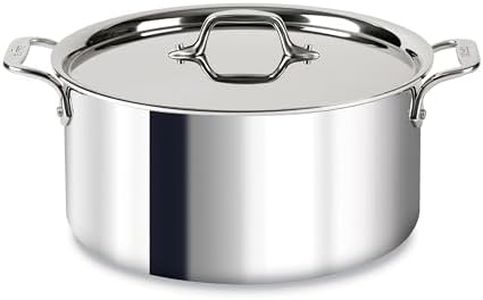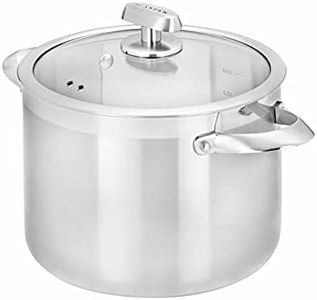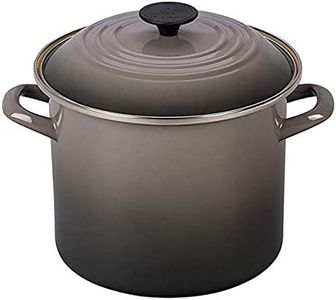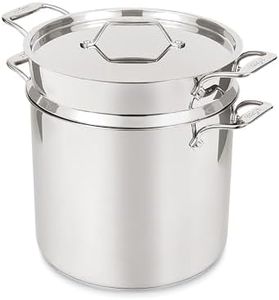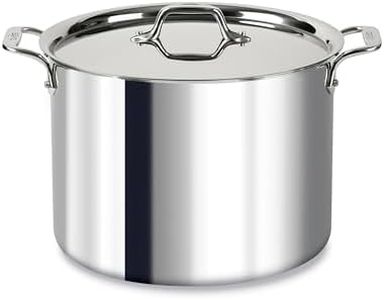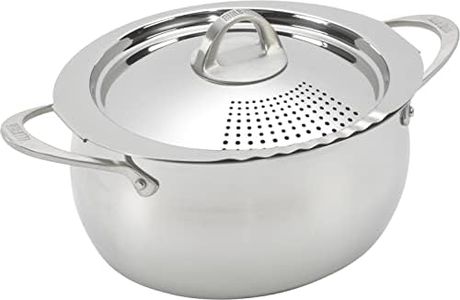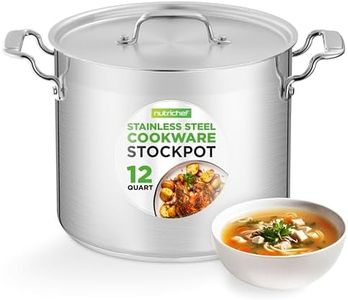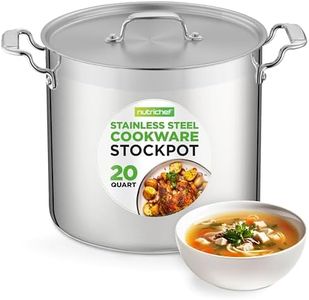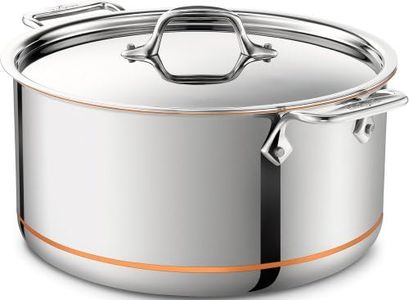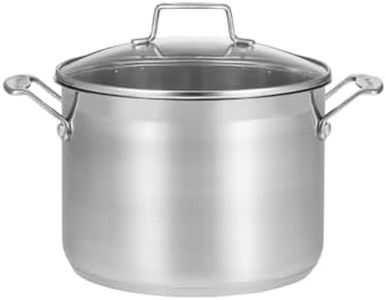We Use CookiesWe use cookies to enhance the security, performance,
functionality and for analytical and promotional activities. By continuing to browse this site you
are agreeing to our privacy policy
10 Best stockpots
From leading brands and best sellers available on the web.Buying Guide for the Best stockpots
Choosing the right stockpot can make cooking large batches of soups, stews, broths, or even pasta much easier and more enjoyable. Since stockpots come in many sizes, materials, and designs, it’s important to match your choice to what you cook most often, how many people you usually feed, and what kind of stove or kitchen equipment you use. The right stockpot will heat evenly, clean easily, and last you for years of steady use.Capacity (Size)Capacity refers to how much the stockpot can hold, usually measured in quarts or liters. The size you pick is important because it determines how much food you can make at once. Small stockpots (around 6 quarts) are good for making soup or pasta for a family of 2-4, while medium sizes (8-12 quarts) work for larger families or gatherings. Large stockpots (16 quarts or more) are great for big crowds, holiday meals, or for making lots of stock to freeze. Think about how many people you cook for and what you usually prepare to choose the right size.
MaterialStockpots are usually made from stainless steel, aluminum, or sometimes enameled or nonstick coatings. The material impacts how well heat spreads across the pot and how easy it is to clean. Stainless steel is durable, resistant to stains, and generally doesn’t react with foods, making it a popular choice. Aluminum heats quickly and evenly, but can react with acidic foods unless coated. Enameled stockpots give a colorful look and resist sticking, but the enamel can chip with rough use. For most people, stainless steel (sometimes with an aluminum or copper core for even heating) gives a good balance of performance and durability.
Base ThicknessThe thickness of the bottom (often called the ‘base’) affects how well the pot heats and how likely it is to burn food. Thicker bases help distribute heat more evenly and prevent hot spots, making it easier to simmer delicate broths or avoid scorching. Thin bases heat up quickly but are more likely to burn food if you’re not careful. If you plan to simmer for hours or use your stockpot for long-cooking dishes, a pot with a thicker, layered base is best.
Lid Type and FitStockpots usually come with a lid made of metal or glass. A tight-fitting lid helps keep heat and moisture in, which is especially important for making soups or stocks that need to simmer for a long time. Glass lids let you check on your food without lifting the lid, but can be heavier or break if dropped. Metal lids are sturdy and lighter. If you want to monitor cooking without losing heat, a glass lid can be handy, but if you prioritize durability, a metal lid is often a better bet.
HandlesHandles on a stockpot should be sturdy and heat-resistant enough to let you move the pot safely, even when it’s full and heavy. Some have metal handles that stay cool or are wide enough for oven mitts, while others may have silicone coatings for extra grip. If you plan to move your stockpot directly from stove to sink or often cook large quantities, look for handles that are securely attached and big enough for a solid grip.
Oven and Dishwasher SafetySome stockpots can go from stovetop to oven, which is handy for certain recipes, while others can only be used on the stove. Dishwasher-safe stockpots are easier to clean, though large ones might not fit in all dishwashers. If you need versatility, check if the pot is oven-safe and look for care instructions to make sure you can clean it the way you like.
Compatibility with Your StovetopNot all stockpots work well on every type of stovetop. For example, induction stovetops need pots made with magnetic materials. Flat-bottomed pots are better for glass stoves, while gas stoves can handle almost any shape. It’s important to check whether the pot is suitable for your particular stove to ensure even heating and safety.

